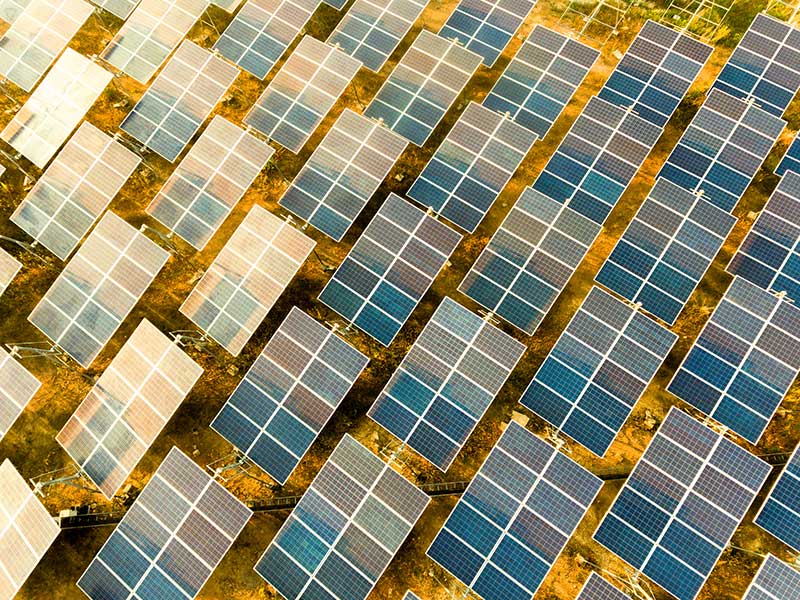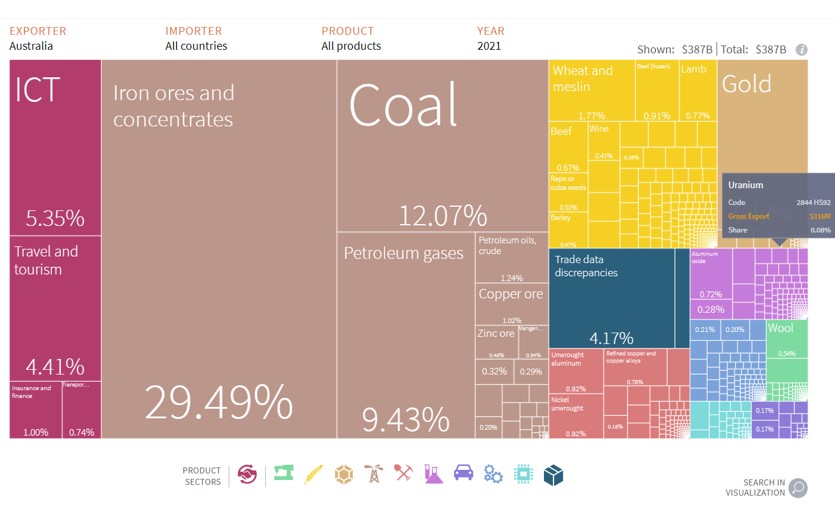The people who used to be at the forefront of climate change scepticism, having failed in that attempt, have found a new strategy: to catastrophise the response to the climate threat, that is, the energy transition.
To develop the context. The theory of how the composition of gasses in the atmosphere changes how heat is either retained or radiated away from the earth is well established.
The theory provides an account of how we even came to exist – how the planet developed the conditions of sufficient heat and atmospheric gasses for life.
The link between rapidly increasing levels of ‘greenhouse gasses’, increasing average surface temperatures and weather pattern changes requires complex modelling in an environment where experiments are impractical, like economics.
Nevertheless, the consistency with which these models indicate severe negative consequences of continued unconstrained emissions is gaining acceptance.

In Australia, 60 per cent of our greenhouse gases come from the energy sector (electricity generation, process heat and transport). These are the easiest sectors to decarbonise, so most discussion focuses on them.
The other sectors aren’t ignored, but they consist of different decisions.
The focus of the former ‘climate sceptics’ now is to ask whether the cure is worse than the disease. Are we better not to adapt to the change rather than suffer the economic consequences of a Canute-like attempt to turn back the tide?
Examples of answers in the affirmative are plentiful, some recently mentioned in this publication. Leading the charge is the claim that solar and wind aren’t cheaper than fossil fuels because they aren’t ‘despatchable’.
Proponents of this argument often refer to ‘baseload power’, being completely unaware of the origin of this term.
A large coal-fired generator has significant limitations. The first is the limit on the ramp rate – the speed at which it can be made to generate more or less power. The second is its need to continually run because of the huge energy wastage when turning it off (as the turbine slows to a halt) and restarting.
These are why, in the era of large coal-fired power stations, there was the move to ‘controlled load’ tariffs such as off-peak hot water, and why industrial users such as aluminium smelters were given big discounts in return for both consuming at night and agreeing to shed load at peak times.
Simply put, the term used to describe a so-called requirement (an always-on generator) only refers to the solutions to earlier mismatches between demand and supply (load and generation).
We now have abundant technologies being developed to deal with this issue in a different generation, a natural consequence of an ever-changing energy system.
The second argument is one that Vaclav Smil has been making for decades based on the concept of energy density: how much land mass is needed to generate energy using different technologies.
It should not be surprising to anyone that using the power of the sun over millennia, which has been stored in plant matter and then morphed into fossil fuels, takes less land space than capturing energy directly from the sun or its effect on the wind.
However, assumptions about land space requirements must continually change in the face of technological developments such as the relentless increase in solar cell efficiency, improvements in wind turbine design, and additional siting options (for example, offshore wind).
The third argument is that the rapid increase in the demand for energy makes it impossible to catch up on the transition. Part of this issue involves one of climate action’s greatest problems, including significant moral issues.
Energy use per person varies dramatically across the planet, splitting largely between the global north and the global south. Climate action cannot be a reason for maintaining this differential.
This discrepancy explains why action to reduce emissions is a primary responsibility of the global north, and why increased emissions may still be expected in other regions.
The case of China is, as always, special. As a huge exporter, much of its energy use is exported (unlike Australia, where we export fuel but with a low energy intensity in production).
However, not only is China being portrayed as an energy cheat as it continues to expand its use of fossil fuels, but people like those cited in Sandy Plunkett’s InnovationAus article also highlight the threat to the energy transition from China’s dominance in many critical materials.
The latter is why the Quad has supply chains for critical minerals as part of their agreement and why they feature highly in the Future Made in Australia plans.
But to argue that new technology, including data centres, drives the increase in electricity demand is fanciful. Certainly, there are instances in the US, such as Georgia, that have invested in fossil fuel generation to meet forecast data centre demand.
However, the Clean Energy Buyers Association, which includes major data centre operators, warn that the expected demand growth may not occur if it is to be met with fossil fuels.
The biggest contributor to electricity demand growth in Australia is simply electrification of the other two energy sectors. Electrifying transport is relatively easy; electrifying process heat is more challenging but easier in low-temperature, small-scale applications (like replacing gas heating in homes).
The final argument relates again to the critical materials needed for the transition and that these are either too expensive for the transition or in insufficient supply.
This argument is the sort of nonsense that comes from people with a tenuous grasp of economics, who imagine that prices are somehow static and that the state of demand and supply is static. Unfortunately, this includes many practising industrial, policy and academic economists.
The reality of economic dynamics, especially in commodities, is that all three fluctuate wildly. What causes these fluctuations is the market doing what it is supposed to do, transmitting information that is the basis for decision-making.
The one thing that can be demonstrated incontrovertibly is the ongoing decline in the per-unit investment cost of renewable generation capacity, and the marginal cost of renewable energy production is zero.
The planning and trajectory for the Australian energy transition could and should be better, but that is another thousand words or more. It is confused by the lack of context to assess the significance of forecasts or required capital investment (see Note).
There is nothing about the “mathematics” or the economics or engineering that says it cannot be done, nor that doing it will wreck the economy.
The nuclear alternative is a fantasy bordering on delusion. Even if there were no impediments to constructing a nuclear power station (like there were no legislative ban and it had a welcoming community), no private sector firm would invest in one because it doesn’t make economic sense.
The suggestion that a global embrace of nuclear energy could result in Australia’s uranium export matching its export of fossil fuels is laughable.

The view of Australia’s total exports from the Harvard Atlas of Economic Complexity shows some important features.
The first is how our biggest export is iron ore. Not shown is that half of our coal exports, by volume, are metallurgical coal that isn’t burnt in power stations.
This metallurgical coal makes up two-thirds of the value of coal exports. The purple patch highlighted is our export of uranium (classed as a chemical), a mere 0.08 per cent of our total exports.
The core thesis of the earlier article was that “a new refrain is born as a growing and increasingly vocal cohort of data-driven energy transition realists are accusing policymakers of ignoring the math.”
The author is right about this, but it should have triggered some inquiry as to the source of this “new refrain.” The answer is obvious and masked in the simple reference to the Manhattan Institute, one of the sources cited, as “a conservative think tank.”
In common with many such “think tanks”, the Manhattan Institute is much more than this label suggests. First and foremost, it is a member of the Atlas Network.
The Manhattan Institute was one of the think tanks established by Antony Fisher, the founder of the Atlas Network, as well as the Institute of Economic Affairs (UK) and the Fraser Institute (Canada).
The Atlas Network and the extremely strong linkages between the various activist libertarian think tanks it supports have proven to be very effective at mounting global campaigns in pursuit of what it calls ‘liberty’, but they are really only the private interests of its funders.
Today, the core funders of the network are fossil fuel billionaires, notably the Koch brothers in the US. These people learnt their moral code by reading Atlas Shrugged and The Fountainhead, whose measure of social justice is the extent to which their wealth is protected and whose strategy to eradicate poverty is to eradicate the poor.
As E.H.Carr wrote in What is History,
The facts of history never come to us ‘pure’, since they do not and cannot exist in a pure form: they are always refracted through the mind of the recorder. It follows that when we take up a work of history, our first concern should not be with the facts that it contains but with the historian who wrote it.
The same adage applies to any policy prescription, especially in the highly politicised world of energy policy and the bitter struggle against the fossil fuel lobby.
David Havyatt is a former telco executive, former adviser to Federal Labor ministers and former advocate on behalf of energy consumers. He is a long term observer of Australian innovation policy.
Note: The apparently very large investments required over the next quarter of a century are thrown about without context. To provide some, let’s see what $100 billion represents.
The current value of the Regulatory Asset Base of the distribution and transmission networks in the NEM is just over $105 billion, which is the depreciated construction cost. Assuming an asset life of fifty years, $50 billion will be spent on replacement over a quarter of a century.
For a generation example, the Loy Yang B Power Station, with a generating capacity of 1070 MW, cost $2.8 billion when completed in 1996; that is $5.8 billion in current dollars.
There are 22.5 GW of coal capacity in the NEM, all reaching the end of their economic life over the next quarter century. To replace them alone would cost $130 billion.
So when next you hear a big number attached to the investment needs of the energy transition, ask what the investment needs are without the transition. The marginal difference is much smaller than the numbers frequently provided and remains much less than the economic cost of inaction.
David Havyatt is also the author of “History of Electricity Reform in Australia” in G.Roger (Ed.) On the Grid: Australian Electricity in Transition 2022 Monash University Publishing
Do you know more? Contact James Riley via Email.
